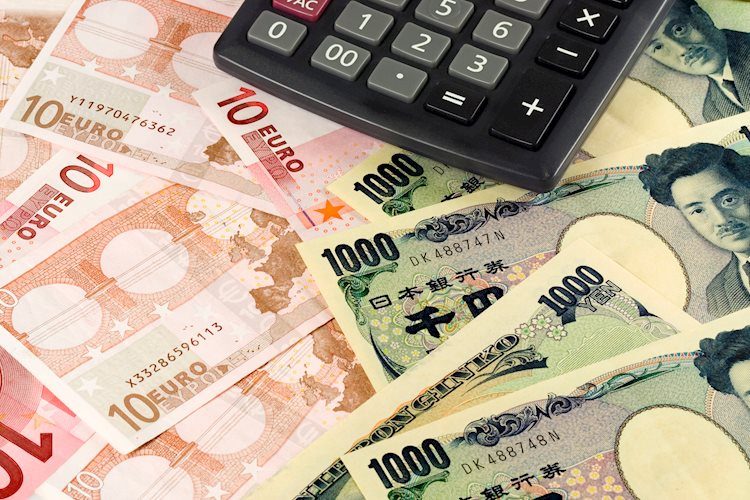EUR/JPY drops to multi-day low, closer to mid-162.00s amid notable JPY strength
- EUR/JPY attracts fresh sellers and extends this week’s rejection slide from the 200-day SMA.
- Strong wage growth data from Japan boosts the JPY and exerts some pressure on the cross.
- The ECB’s dovish bias continues to undermine the Euro and contributes to the ongoing slide.
The EUR/JPY cross comes under some renewed selling pressure following the previous day's two-way directionless price moves and drops to a three-day low, around the 162.60 area during the Asian session on Thursday.
The Japanese Yen (JPY) strengthens across the board in reaction to government data, which showed that base salary, or regular pay, in Japan rose 2.7% in November, marking the fastest increase since 1992. Additional details of the report revealed the inflation rate that the ministry uses for wage calculation accelerated from 2.6% in October to 3.4% from a year earlier. This backs the case for another interest rate hike by the Bank of Japan (BoJ), in turn, providing a modest lift to the JPY and weighing on the EUR/JPY cross.
Apart from this, the cautious market mood, persistent geopolitical risks and trade war fears turn out to be other factors benefiting the JPY's relative safe-haven status. The shared currency, on the other hand, is undermined by weak German data released on Wednesday. In fact, the Federal Statistics Office reported that Germany's Factory Orders unexpectedly slumped in November, by 5.4% MoM in November compared to the 1.5% decline in the previous month. Moreover, German Retail Sales declined by 0.6% MoM in November.
The data adds to concerns about the faltering Eurozone economy and validates the European Central Bank's (ECB) dovish bias. This, along with the underlying bullish tone surrounding the US Dollar (USD), weighs on the Euro and exerts additional pressure on the EUR/JPY cross. Even from a technical perspective, the recent repeated failure to break through the 200-day Simple Moving Average (SMA) pivotal resistance favor bearish trades and suggests that the path of least resistance for spot prices is to the downside.
Japanese Yen PRICE Today
The table below shows the percentage change of Japanese Yen (JPY) against listed major currencies today. Japanese Yen was the strongest against the Australian Dollar.
| USD | EUR | GBP | JPY | CAD | AUD | NZD | CHF | |
|---|---|---|---|---|---|---|---|---|
| USD | 0.07% | 0.23% | -0.30% | -0.04% | 0.28% | 0.21% | -0.04% | |
| EUR | -0.07% | 0.16% | -0.34% | -0.10% | 0.22% | 0.14% | -0.12% | |
| GBP | -0.23% | -0.16% | -0.53% | -0.26% | 0.06% | -0.01% | -0.25% | |
| JPY | 0.30% | 0.34% | 0.53% | 0.23% | 0.56% | 0.44% | 0.24% | |
| CAD | 0.04% | 0.10% | 0.26% | -0.23% | 0.33% | 0.24% | -0.01% | |
| AUD | -0.28% | -0.22% | -0.06% | -0.56% | -0.33% | -0.08% | -0.31% | |
| NZD | -0.21% | -0.14% | 0.01% | -0.44% | -0.24% | 0.08% | -0.23% | |
| CHF | 0.04% | 0.12% | 0.25% | -0.24% | 0.01% | 0.31% | 0.23% |
The heat map shows percentage changes of major currencies against each other. The base currency is picked from the left column, while the quote currency is picked from the top row. For example, if you pick the Japanese Yen from the left column and move along the horizontal line to the US Dollar, the percentage change displayed in the box will represent JPY (base)/USD (quote).
Forex News
Keep up with the financial markets, know what's happening and what is affecting the markets with our latest market updates. Analyze market movers, trends and build your trading strategies accordingly.
